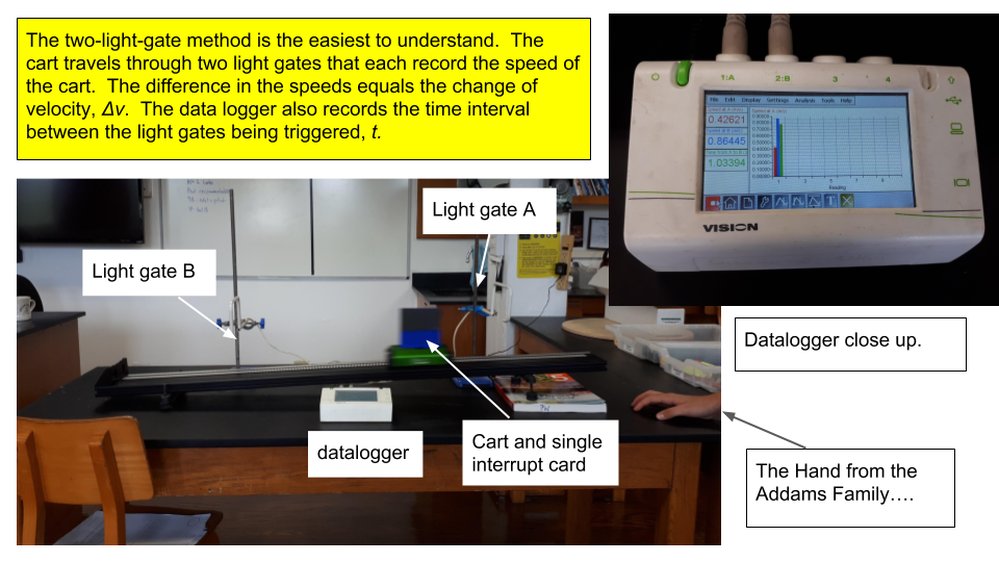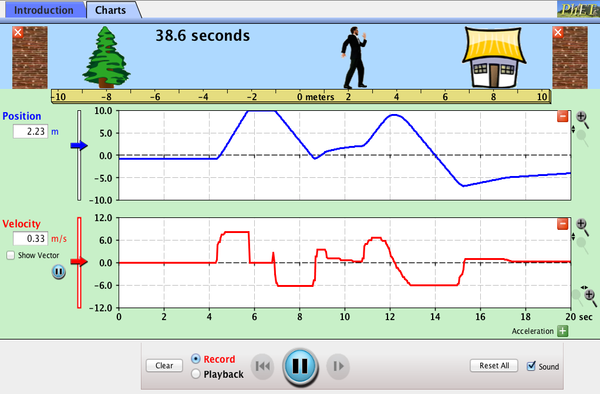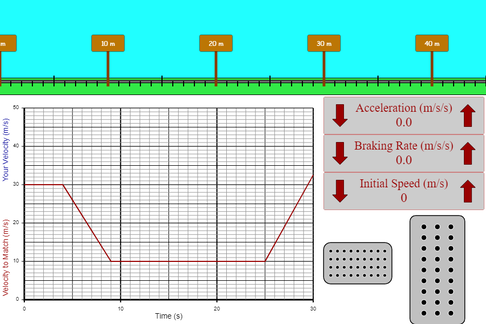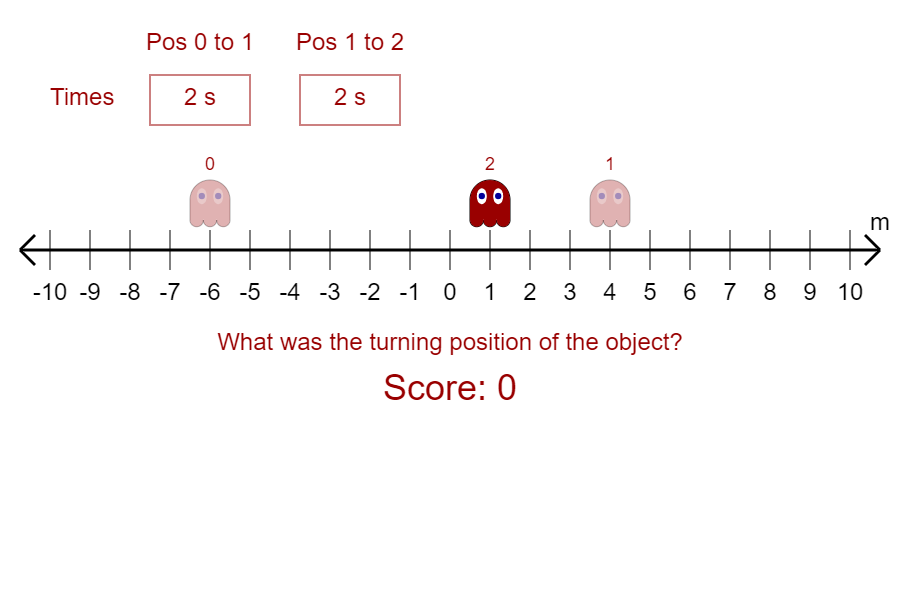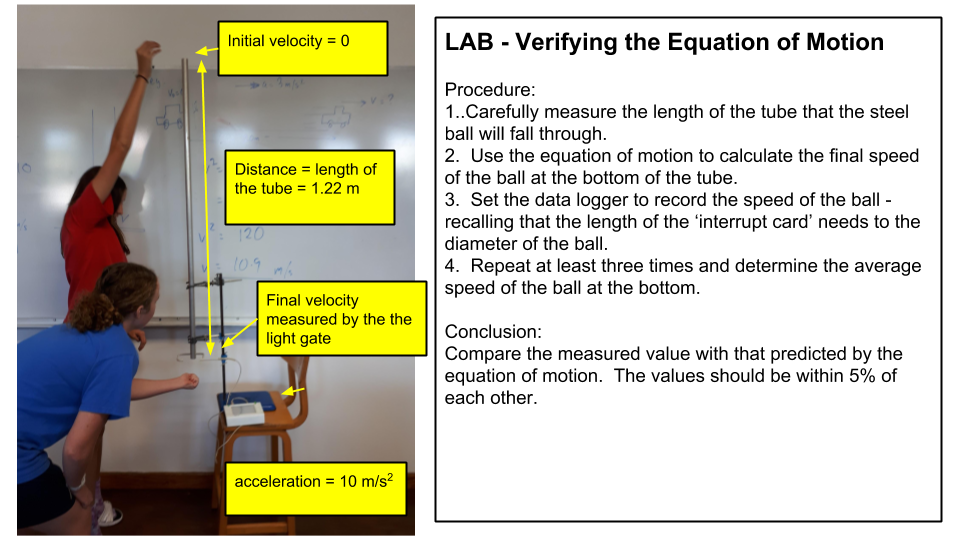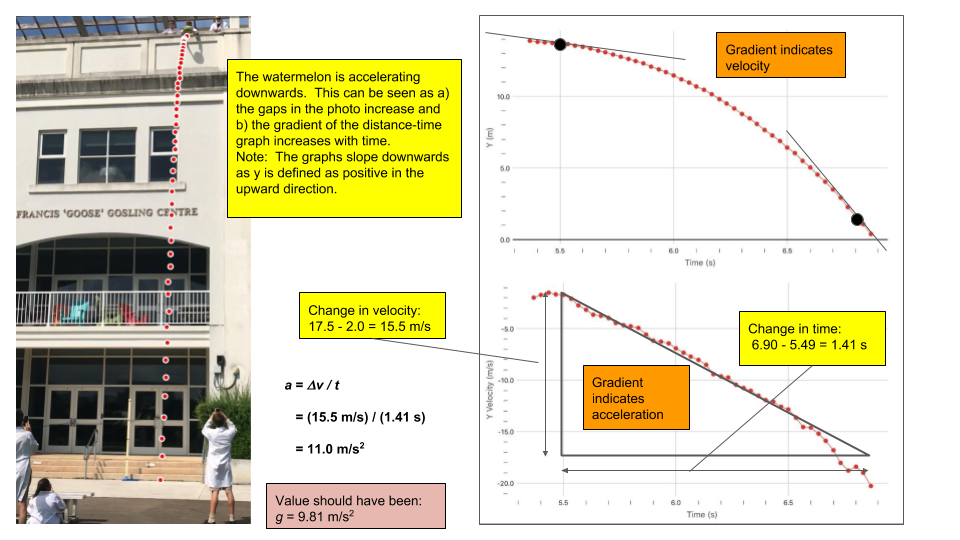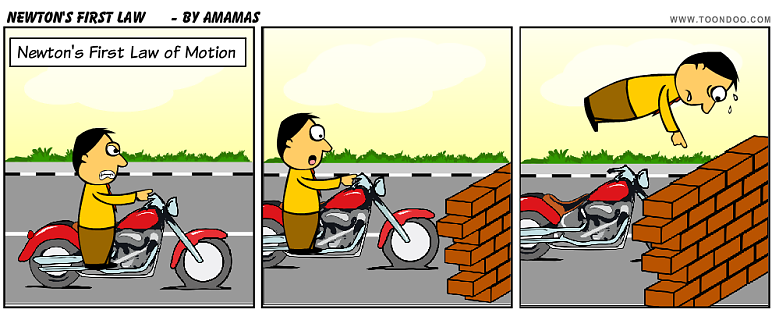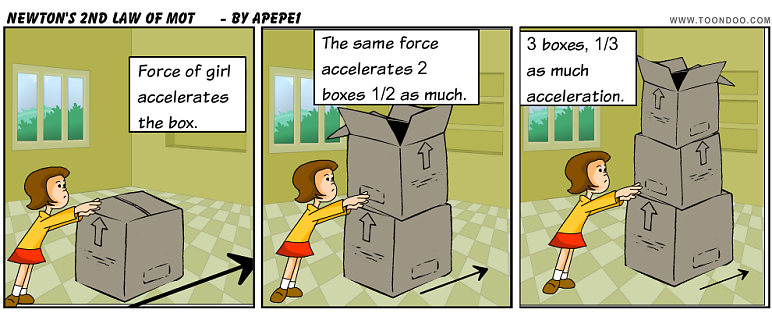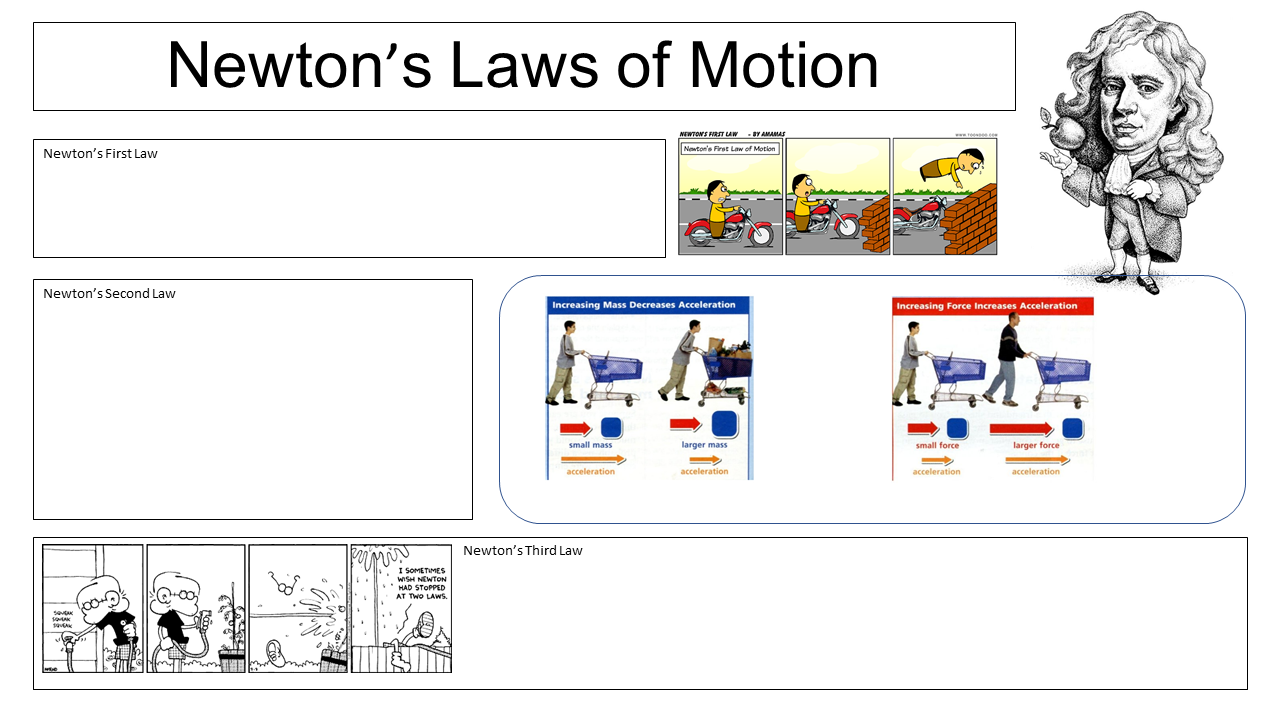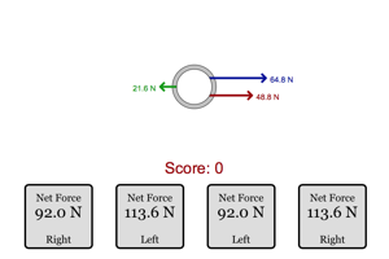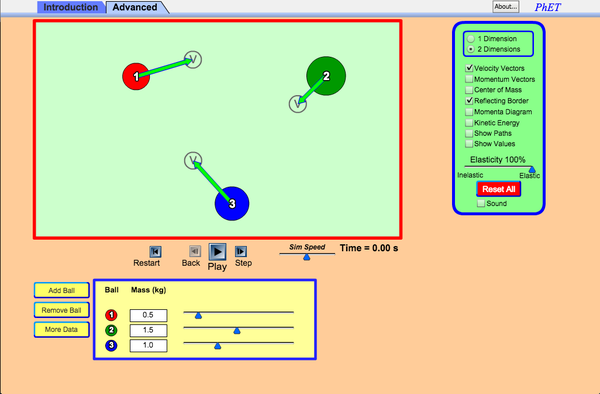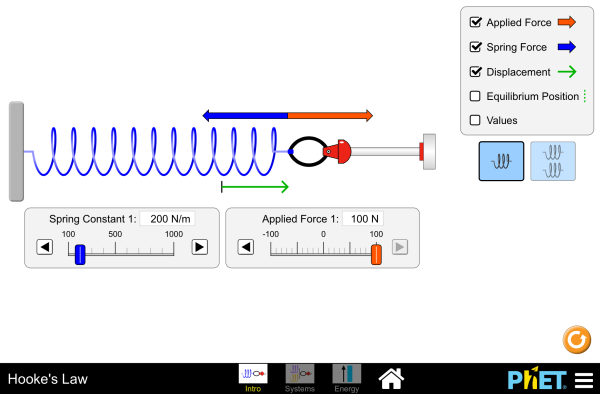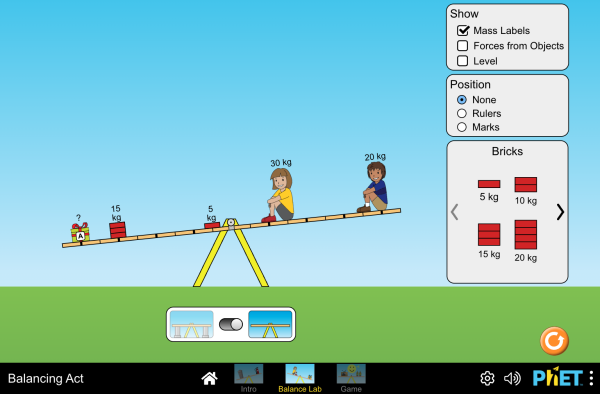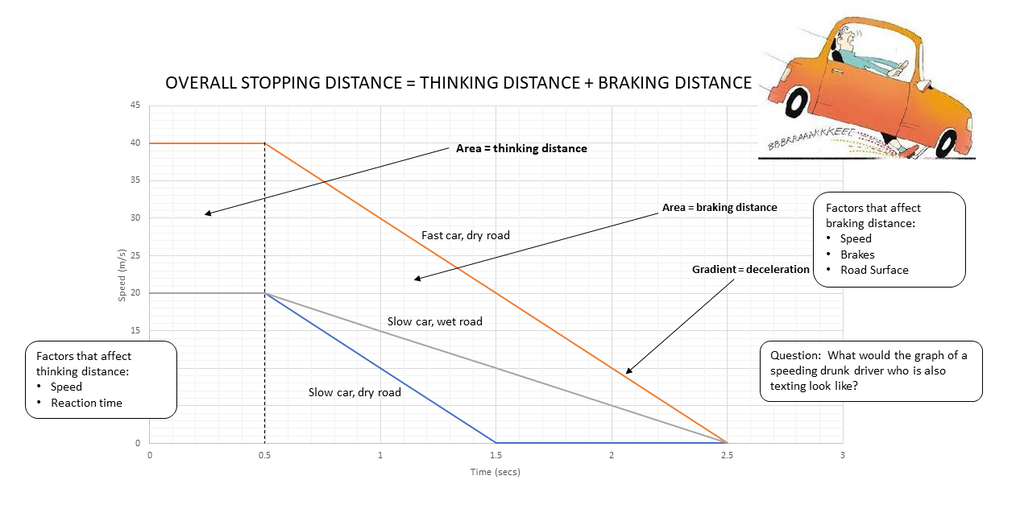|
Home >> IGCSE Physics >> Forces and Motion
|
Photo: Blue Sky Flight's Cessna flying over South Shore. There is a lot of physics in flying!
This topic introduces the concepts of force, speed, velocity, acceleration and momentum. The motion and behaviour of objects in basic situations is discussed and experimented with, such as falling parachutists, bouncing balls and collisions between objects. This is the foundation of the science of Mechanics, most of which is based on the work of Sir Isaac Newton nearly 400 years ago. We also look at the effects of forces when applied to materials and levers.
Student Booklet - Sept 2022
1.1 - Kinematics (Describing Motion)
- be able to measure speed and acceleration
- be able to use and interpret distance-time and velocity-time graphs
- be able to use the equation of motion
There are a few equations that can be used to relate the variables; initial velocity, final velocity, acceleration, time and distance. You only need to learn THREE of them.
\[v = \frac{x}{t}\]
This is the famous \(speed = \frac{distance}{time}\) equation that everyone has seen before! It is very useful to calculate the average speed etc. Please note that it ONLY WORKS if the object is moving at a CONSTANT speed. If the speed is changing then this equation will not work and you will get the wrong answer.
\[a = \frac{\Delta v}{t}\]
This is the standard equation that defines acceleration as the rate of change of velocity. It comes from the GRADIENT of a velocity-time graph! As there are only 3 variables, it is straightforward to rearrange.
The equation below (the 'equation of motion') looks complicated, but as either the initial velocity or final velocity is usually equal to zero the rearrangement is generally pretty straightforward. It is commonly used to work out the speed of impact of an object falling from a set height (e.g. a water melon from the top of the Gosling Centre piazza \((h =16.5 \,\text{m})\), or the distance that it takes to stop a moving object.
\[v^{2}=v_{o}^{2}+2ax\]
\[v = \frac{x}{t}\]
This is the famous \(speed = \frac{distance}{time}\) equation that everyone has seen before! It is very useful to calculate the average speed etc. Please note that it ONLY WORKS if the object is moving at a CONSTANT speed. If the speed is changing then this equation will not work and you will get the wrong answer.
\[a = \frac{\Delta v}{t}\]
This is the standard equation that defines acceleration as the rate of change of velocity. It comes from the GRADIENT of a velocity-time graph! As there are only 3 variables, it is straightforward to rearrange.
The equation below (the 'equation of motion') looks complicated, but as either the initial velocity or final velocity is usually equal to zero the rearrangement is generally pretty straightforward. It is commonly used to work out the speed of impact of an object falling from a set height (e.g. a water melon from the top of the Gosling Centre piazza \((h =16.5 \,\text{m})\), or the distance that it takes to stop a moving object.
\[v^{2}=v_{o}^{2}+2ax\]
LAB - Measuring Acceleration using Light Gates
There are two methods that can be used; a) use two light gates that measure the speed at the beginning and end points, as well as measuring the time interval between them. The data is then entered into the equation to yield the acceleration. b) Use one light gate, but have a double-interrupt card that breaks the beam twice. If you have a starting or finishing speed that is equal to zero there are a few other methods that you can use.
There are two methods that can be used; a) use two light gates that measure the speed at the beginning and end points, as well as measuring the time interval between them. The data is then entered into the equation to yield the acceleration. b) Use one light gate, but have a double-interrupt card that breaks the beam twice. If you have a starting or finishing speed that is equal to zero there are a few other methods that you can use.
|
PhET - Moving Man
This is good to show the inter-relationship between displacement, velocity and acceleration graphs. It is a little fiddly to use, so takes a bit of practice. Displacement is the vector equivalent of distance. If an object returns to its original position its displacement equals zero. |
|
The key to this challenge is to calculate the deceleration (braking rate) and the acceleration first using the equation. Then run the animation - the game is to perfectly match the graphs.
|
|
Physics Aviary Game: Describing Motion Challenge.
The displacement is the vector distance from the origin, whereas the distance is how far the object has moved overall. This a good game to highlight this and check your understanding of negative numbers! Works really well on an iPad. |
|
Great game, which always reminds me of road trips in the US. Think about speed, time and distance. "are we there yet?"
|
|
|
|
|
|
VideoPhysics app - this short YouTube video clip gives some instructions how to use the motion analysis app that we will use a lot in class.
|
LAB - Analysis of a Watermelon Dropped from the Gosling Centre
Students were tasked to determine the speed of impact using three distinct methods:
a) use the final two frames of the video capture to determine the speed directly.
b) use the measured value of the height, 15.5 m, and the standard value of g to determine the impact speed.
c) use the time-of-flight from the video capture and the standard value of g to determine the impact speed
Bonus - use the velocity-time graph of the vertical motion to measure the acceleration, which should be 9.81 m/s2.
Finally, compare the results. Ideally they will all yield the same answer... Should be around 64 km/hr.
Students were tasked to determine the speed of impact using three distinct methods:
a) use the final two frames of the video capture to determine the speed directly.
b) use the measured value of the height, 15.5 m, and the standard value of g to determine the impact speed.
c) use the time-of-flight from the video capture and the standard value of g to determine the impact speed
Bonus - use the velocity-time graph of the vertical motion to measure the acceleration, which should be 9.81 m/s2.
Finally, compare the results. Ideally they will all yield the same answer... Should be around 64 km/hr.
Homework Assignments
| hw_1.2_graphing_motion.pdf | |
| File Size: | 323 kb |
| File Type: | |
1.2 - Newton's Laws of Motion
Objectives:
- know and understand Newton's Laws of Motion
- know the relationship between resultant force, mass and acceleration
- be able to calculate the resultant force on an object
Forces are pushes and pulls. They are used to change things. In particular they can change an objects:
Newton's First Law
What this means: In order to change the object's motion (i.e. speed and/or direction) we need to apply an overall resultant force to it. If the forces are balanced (or non-existent) then the object's motion does NOT change. It will continue to move at a constant speed in a straight line. This is often referred to as the law of inertia. Inertia is an object's resistance to change, at IGCSE and AP level we can consider this to be the mass of the object.
- Speed
- Direction
- Shape
Newton's First Law
- An object that is at rest will stay at rest unless an external resultant force acts upon it.
- An object that is in motion will not change its velocity unless an external resultant force acts upon it.
What this means: In order to change the object's motion (i.e. speed and/or direction) we need to apply an overall resultant force to it. If the forces are balanced (or non-existent) then the object's motion does NOT change. It will continue to move at a constant speed in a straight line. This is often referred to as the law of inertia. Inertia is an object's resistance to change, at IGCSE and AP level we can consider this to be the mass of the object.
Newton's Second Law
- The acceleration of an object is directly proportional to the resultant force acting on it and inversely proportional to its mass.
LAB WORK: You will be performing a full investigation into Newton's Second Law.
Newton's Third Law
- Every action has an equal and opposite reaction.
|
PhET - Forces and Motion (Basics)
Nice easy simulation to show the concept of balanced and unbalanced forces. |
|
Physics Aviary Game: Linear Net Force. You have two minutes to determine the overall resultant force on the objects. Will the objects remain at rest (or constant velocity) or speed up/slow down and/or change course?
|
1.3 - Gravity and Free Fall
Objectives:
- investigate the motion of falling
- describe the forces acting on falling objects and explain why falling objects reach a terminal velocity
The saying goes: what comes up must come down.
|
|
YouTube Clip: Brian Cox recreates the famous Guinea and Feather Experiment on a much larger scale! The bowling ball has a weight than the feather so needs a far higher air resistance (drag) to counterbalance it. This means that it reaches a far higher terminal velocity than the feathers. In a vacuum they both fall at the same rate as the weight is proportional to the inertial mass.
|
|
|
Hammer and Feather on the Moon - The famous clip of David Scott testing Galileo's experiment on the Moon!
|
1.4 - Momentum
Objectives:
- know and use the relationship between momentum, mass and velocity
- use the conservation of momentum to calculate the mass, velocity or momentum of objects
- use the relationship between force, change in momentum and time taken
1.5 - Hooke's Law
Objectives:
- describe experiments to investigate how extension varies with applied force for helical springs and metal wires
- understand that the initial region of a force-extension graph is associated with Hooke’s law
- describe how extension varies with applied force for rubber bands
- associate elastic behaviour with the ability of a material to recover its original shape after the forces causing deformation have been removed
Hooke's Law
|
|
|
1.6 - Turning Moments and Stability
Objectives:
- know and use the relationship between the moment of a force and its distance from the pivot.
- know and use the principle of moments for a simple system of parallel forces acting in one plane
- recall that the weight of a body acts through its centre of gravity
- understand that the upward forces on a light beam, supported at its ends, vary with the position of a heavy object placed on the beam
Moments
1.7 - Road Safety and Physics
Objectives:
- use the ideas of momentum to understand safety features
- describe the factors affecting the stopping distance of a vehicle, including; speed, mass, road condition and reaction time.
Motorcycle (bike) accidents are sadly a feature of everyday life here. They DO NOT need to be. Statistically the most common demographic of serious bike accidents are the 16-24 age group, especially males and tend to occur on Friday and Saturday nights. ANY vehicle - no matter what it is - must obey the "Laws of Physics" even if they don't obey the laws of the island. The vast percentages of bike crashes (THEY ARE RARELY ACCIDENTS) are due to:
Speeding means that you have a much greater momentum which then needs to be changed in a very short time by a large force. The inertia of the rider (first law) tends to mean that the rider comes off the bike even if the bike manages to stop in time. Often the force of the brakes is not enough to decelerate the bike in a short enough distance to avoid a collision. (increases both the thinking and braking distances)
Inattention and riding under the influence results in the reaction time greatly increasing. This means that the bike will continue to move at full speed (x = vt) for the time taken to apply the brakes. (increases thinking distance)
Driving under the influence of drugs or alcohol usually results in speeding due to impaired judgement. (increases both thinking and braking distances)
Helmets decrease the danger of life changing injuries to the head - but only if they are worn correctly. The cushioning on the inside increases the time taken for the head inside to stop, therefore reducing the force on the skull and brain. At least TWO of the crashes that I have seen have involved the helmet coming off as the strap was too loose.
Some former Saltus students have made a hard hitting and graphic documentary on this issue: A Piece of the Rock. Remember, even if you are the best rider on the island, there could well be a car pulling out of that blind entrance or overtaking around the next corner.... Ride defensibly and avoid being on the road at all after dark on Friday's and Saturday's.
- Speeding
- Inattention (texting etc)
- Alcohol and/or drugs
Speeding means that you have a much greater momentum which then needs to be changed in a very short time by a large force. The inertia of the rider (first law) tends to mean that the rider comes off the bike even if the bike manages to stop in time. Often the force of the brakes is not enough to decelerate the bike in a short enough distance to avoid a collision. (increases both the thinking and braking distances)
Inattention and riding under the influence results in the reaction time greatly increasing. This means that the bike will continue to move at full speed (x = vt) for the time taken to apply the brakes. (increases thinking distance)
Driving under the influence of drugs or alcohol usually results in speeding due to impaired judgement. (increases both thinking and braking distances)
Helmets decrease the danger of life changing injuries to the head - but only if they are worn correctly. The cushioning on the inside increases the time taken for the head inside to stop, therefore reducing the force on the skull and brain. At least TWO of the crashes that I have seen have involved the helmet coming off as the strap was too loose.
Some former Saltus students have made a hard hitting and graphic documentary on this issue: A Piece of the Rock. Remember, even if you are the best rider on the island, there could well be a car pulling out of that blind entrance or overtaking around the next corner.... Ride defensibly and avoid being on the road at all after dark on Friday's and Saturday's.
|
|
A Piece of the Rock (2017) - trailer for the documentary about Bermuda's deadly bad driving culture. Bernews 13 Nov 2017 - 1419 RTA that required emergency room treatment during 2017 (so far) |
|
|
Madness on our roads December 2017 clip from the Royal Gazette.
|
Other Resources
|
Max Speed of Sailing Boats - power point given to the students just before the America's Cup World Series event in October 2015
|
